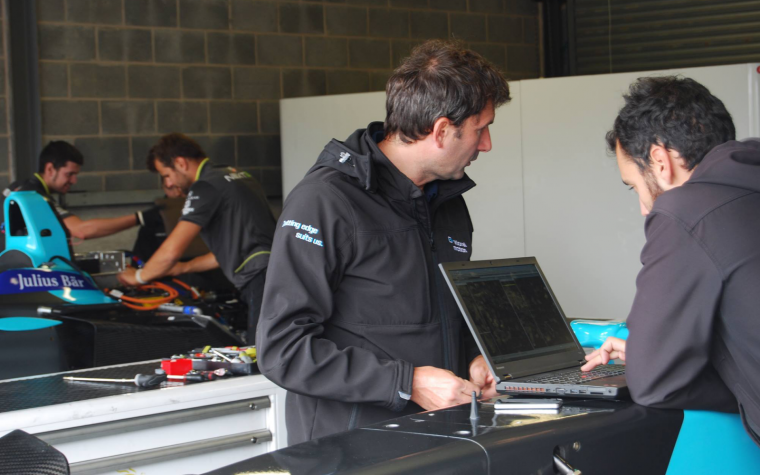Code is Key in Formula E
[vc_row][vc_column][vc_column_text]
With a long break before the Punta del Este ePrix, teams have had a long time to analyse their performance and reassess strategies ahead of the upcoming race. One of the areas the teams will heavily investing in, is software. Well-designed code is not only important in the car’s basic functionality, but also ensuring reliability, efficiency and good drivability.
This year, the race distance has been extended by two laps, as is the case with many races this season. The idea behind this is to test some of the efficiency gains made by the season two power units, as well as to force more aggressive energy saving strategies which will add to the spectacle. The Punta del Este circuit is also one of the fastest circuits on the calendar, featuring long straights and fast chicanes, and this in turn will throw up even more of an opportunity for software led energy management. In Putrajaya, TV graphics of one of the Dragon cars during the race highlighted an interesting thing: as they exited the last corner and the driver stamped on the accelerator, as expected the power bar jumped up to 170kW, maximum race power, but then a couple of seconds later dropped down to 140kW for the remainder of the straight. This was clearly just one way the team was trying to optimise their usable energy while minimising the impact on performance. The team has multiple ‘power maps’ or ‘strats’ they can program in and choose between during the race, and this will be all the more important on the coast of Uruguay this weekend.
As is seen almost every race in Formula E, reliability can be the deciding factor in any race result. Teams will hope to have applied their knowledge from pre-season testing and the first two rounds on their powertrain, and how achieve maximum performance without pushing their system over the limit. As is often referred to on the cars, there is a ‘failsafe’ mode which the car can switch into if it detects certain conditions such as high motor, inverter, or battery temperatures. It’s a fine balancing act the teams must play to keep things in the green, while still trying to keep up with their rivals. By having a good set of ‘power maps’ up their sleeve for the race, this allows the team to respond appropriately if they see certain temperatures are worryingly high. Reliability also encompasses the basic operation of the car, and if there are bugs in the code, strange events such as those seen by NEXTEV drivers with cars ‘driving themselves forward’ could be avoided.
The last key area in which code can make a significant difference is the drivability of the car. Again, unfortunately this is a woe which particularly effects the NEXTEV squad. In the opening two rounds, both drivers struggled especially in qualifying, and part of this was due to the high levels of torque produces by their powertrain. Although torque is a good thing to have at a driver’s disposal – aiding acceleration out of corners – it also can present a problem in terms of getting all that power down on the road. Both drivers could be seen ‘lighting-up’ the rear tyres as they left corners, simply generating wheel spin instead of usefully accelerating the car forwards. The team have openly said they are working on this, and can deploy changes in the code to create a more progressive acceleration when the driver puts the pedal to the metal.
[/vc_column_text][/vc_column][/vc_row][vc_row][vc_column][vc_column_text]
Image courtesy of Joe Jones
[/vc_column_text][/vc_column][/vc_row]





 No part of this website or any of its contents may be reproduced, copied, modified, adapted, used or distributed without the prior written consent of the author. e-racing.net is not responsible for the content of external sites or links.
No part of this website or any of its contents may be reproduced, copied, modified, adapted, used or distributed without the prior written consent of the author. e-racing.net is not responsible for the content of external sites or links.